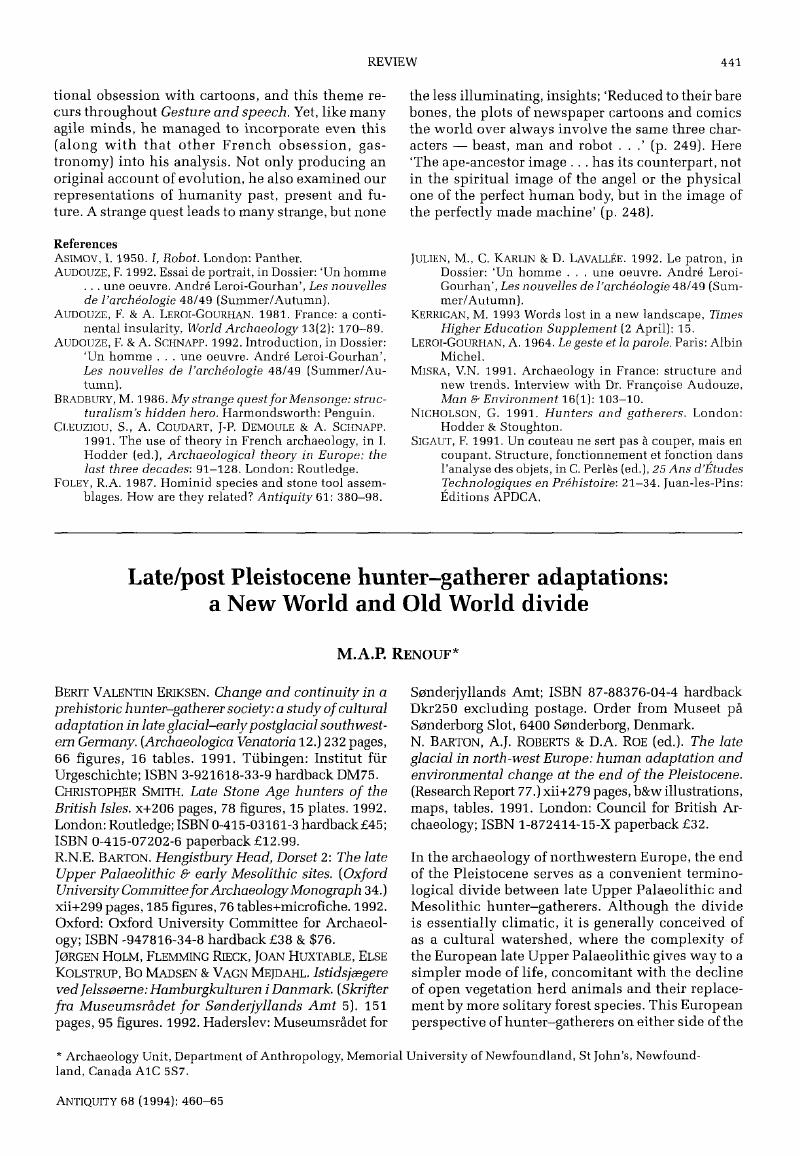No CrossRef data available.
Article contents
Late/post Pleistocene hunter-gatherer adaptations: a New World and Old World divide
Published online by Cambridge University Press: 02 January 2015
Abstract
An abstract is not available for this content so a preview has been provided. Please use the Get access link above for information on how to access this content.

- Type
- Review articles
- Information
- Copyright
- Copyright © Antiquity Publications Ltd. 1994
References
Bailey, G.N. & Parkington, J. (ed.). 1988. The archaeology of prehistoric coastlines. Cambridge: Cambridge University Press.Google Scholar
Constandse-Westermann, T.S. & Newell, R.R.
1990. Social and biological aspects of the western European Mesolithic population structure: a comparison with the demography of North American Indians, in Bonsall, C. (ed.), The Mesolithic in Europe: 106–15. Edinburgh: John Donald.Google Scholar
Keeley, L.H.
1988. Hunter-gatherer economic complexity and ‘population pressure’: a cross-cultural analysis, Journal of Anthropological Archaeology
7: 373–411.CrossRefGoogle Scholar
Legge, A.J. & Rowley-Conwy, P.A.
1988. Star Carr revisited. London: Centre for Extra-Mural Studies.Google Scholar
Meldgaard, M. (ed.). 1990. Qeqertasussuk: De Først Mennesker i Vestgronland. Christanshab, Greenland: Christianshab Lokalmuseum & Det Grönlands Selskab.Google Scholar
Price, T.D.
1982. Willow tales and dog smoke, Quarterly Review of Archaeology
3(1): 4–7.Google Scholar




